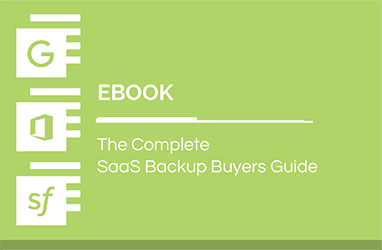Spanning Blog
Mar 11
2024
Mastering Salesforce Backup [Webinar Recap]
Our recent webinar explored the Salesforce data protection landscape and discussed why a third-party backup solution is critical for safeguarding your data.
Mar 04
2024
How to Backup Google Workspace
Learn how Google Workspace data can be backed up using Google-native solutions and comprehensive, third-party solutions like Spanning Backup.
Feb 28
2024
How to Back Up to Google Cloud
Backing up data to Google Cloud involves utilizing Google Cloud Storage to safeguard and preserve digital information. Learn how to accomplish it.
Feb 16
2024
What Is Multifactor Authentication (MFA)? How It Works, Examples & Benefits
Multifactor authentication (MFA) requires users to provide multiple types of verification to access digital accounts, systems and apps. Learn how it works.
Feb 05
2024
What is Cloud Backup? How It Works, Benefits and Best Practices
Cloud backup protects your business from data loss and costly downtime while enabling business continuity. Learn about how it works, methods, and more.
Jan 31
2024
What Is Email Security? Importance, Best Practices and More
Email security has become critical for modern businesses in today’s rapidly evolving cyberthreat landscape. Read the blog to learn how you can achieve it.
Jan 23
2024
What Is Dark Web Monitoring? Why Is Dark Web Monitoring Important?
Dark web monitoring scans and analyzes the dark web for compromised or leaked personal information. Learn more.
Dec 22
2023
Option to Disable Self-Service for Microsoft 365
You now have the option to disable self-service restore/export for Microsoft 365 with Spanning Backup. Learn more.
Dec 18
2023
What is Data Loss Prevention (DLP)? Definition, Importance and Examples
Data loss prevention (DLP) is a program that combines technologies, strategies and processes to prevent data loss and unauthorized access. Learn more.
Dec 04
2023
How to Backup Outlook Emails
Learn how to backup outlook emails. Explore the backup options available to you and discover why it’s important to protect from data loss and corruption.





